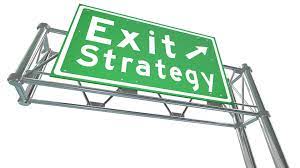The next step after writing a business plan is to conduct a competitive analysis. This section is included in almost every business plan, and the information you include will depend on several factors, including the number of competitors, what they offer, and their size in comparison to your company. Competitive analysis is important for every business. This is because understanding your competition and devising means to stand out will play a major role in your success as a business. This guide will walk you through everything you need to know about competitive analysis and how to conduct one.
What Is Competitive Analysis?
Competitive analysis entails identifying your direct and indirect competitors and researching their strengths and weaknesses in comparison to your own.
Direct competitors market to the same audience that you do, whereas indirect competitors market to a different audience. Following the identification of your competitors, you can use the information gathered to determine your position in the market landscape.
What Should A Competitive Analysis Include?
The goal of this type of analysis is to gain a market advantage and improve your business strategy. It’s difficult to know what others are doing to win clients or customers in your target market without conducting a competitive analysis. A competitive analysis report may include the following items:
- Describe your company’s target market.
- Specifics about your product or service in comparison to competitors’
- Market share, sales, and revenues, both current and projected
- Cost comparison
- Analysis of marketing and social media strategies
- Customer rating disparities
To evaluate strategy efficacy, you will compare each detail of your product or service to the competition. You can make data-driven decisions by comparing success metrics across companies.
The Disadvantages of Competitive Analysis
There are some disadvantages to competitive analysis that you should consider before proceeding with your report. While these disadvantages are minor, understanding them will help you become a better manager or business owner. Here are some things to note when making a competitive analysis:
#1. Act on the information you’ve gotten
You don’t just want to gather information from your competitive analysis; you also want to act on it. The data will only show you your place in the market landscape. The secret to competitive analysis is to use it to solve problems and improve your company’s strategic plan.
#2. Be cautious of confirmation bias.
Confirmation bias refers to interpreting information based on pre-existing beliefs. This is harmful because it can lead to the retention of false beliefs. To avoid bias, you should base your decisions on all available data. In the preceding example, the business owner may believe they are the best at social media in the SEO dental market. Because of this belief, when they conduct social media market research, they may only gather enough information to confirm their own bias—even if their competitors are statistically superior at social media. However, if they used all available data, they could eliminate this bias.
#3. Update your analysis on a regular basis.
A competitive analysis report provides a snapshot of the current market landscape. This report can provide you with enough information to make changes to your company, but you should not refer to it again unless the information is regularly updated. Market trends are constantly changing, and while updating your report can be time-consuming, it will ensure that you always have accurate information about your competitors.
How to Write a Competitive Analysis
The following steps are involved in developing the competitive analysis section of your business plan:
#1. Determine Your Competition
To begin, match your definition of competition with that of investors. Investors define competition as any service or product that a customer can use to meet the same need(s) that the company does. This includes businesses that provide comparable products, substitute products, and other customer options (such as performing the service or building the product themselves). Under this broad definition, any business plan that claims there are no competitors severely undermines the management team’s credibility.
Companies frequently find themselves in a difficult position when it comes to identifying competitors. On the one hand, you may want to demonstrate that your company is unique (even by the investors’ broad definition) by listing few or no competitors. This, however, has a negative connotation. If there are no or few companies in a market space, it suggests that there is not a large enough base of potential customers to support the company’s products and/or services.
#2. Choose the Correct Competitors to Analyze
Once your competition has been identified, you should think about which competitors to analyze. Investors will expect that not all competitors are “apples-to-apples” (that is, they do not offer identical products or services) and will understand if you only choose companies that are similar in nature. As a result, you must include both direct and indirect competitors.
Direct Competitors
Direct competitors are those who provide similar products and services to the same potential customers. If you sell your products or services online, your direct competitors would also include companies whose websites rank in the top five positions on Google Search for your same target keyword.
For example, if you run a home-based candle-making business, your direct competitors would be other candle makers who sell similar products at comparable prices. Companies that rank for the keywords “homemade candles,” “handmade candles,” or “custom candles” are also online competitors.
Indirect Competitors
Indirect competitors are those who provide different products and services to the same target market or those who provide similar products and services to a different target market.
In some cases, looking at alternative distribution channels can help you identify indirect competitors. A small business selling a product online, for example, may compete with a big-box retailer selling similar products at a lower price.
You must describe the appropriate competitors after you have chosen them. You must also objectively analyze each of their strengths and weaknesses, as well as the key drivers of competitive differentiation in the same market, in order to do so.
Perform a SWOT Analysis on each competitor, including the following information:
- Name of the Competitor
- Competitor Overview (where are they located; how long have they been operating)
- Product or Service of a Competitor
- Pricing of the Competitors
- Location Estimated Market Share (s)
- Prospective Clients (Geographies & Segments)
- Competitor’s Advantages
- Weaknesses of the Competitors
You can determine your company’s competitive advantage against each competitor by understanding what your competitors offer and how customers perceive them.
#3. Assess Your Competitive Advantage
Perhaps most importantly, you must describe your company’s competitive advantages over competitors in the space, as well as, ideally, how the company’s business model creates barriers to entry. “Barriers to entry” are reasons why new companies would find it difficult to enter or compete in the same market.
For example, you may have a patent that adds value to your customers and makes them less likely to switch suppliers, thereby shielding your company from potential competitors. Alternatively, you may have more resources than your competitors and thus be able to provide better customer services.
Areas Where You Can Have A Competitive Advantage
The following are some areas where you might have a competitive advantage:
- Company Size – Larger companies have more resources and can usually offer lower prices than smaller businesses. This is a significant entry barrier because starting a small business and competing with a larger company can be difficult.
- Product or Service Differentiation – If your product or service is distinct in some way, customers are less likely to switch to a competitor.
- Experience & Expertise – Experience and knowledge are valuable assets that can help you stand out from the crowd.
- Location – If you are in an area where your product or service is in high demand, this can be a barrier to entry because competitors will not want to open new locations.
- Patents and copyrights – Protecting intellectual property can keep others from entering the same market as you and competing with you.
- Customers are loyal to brands they have come to trust, which shields the company from new competitors.
- Customer Service – Offering excellent customer service can help you keep customers and keep them from switching suppliers.
- Lowest Cost Offerings – Offering a lower price than your competitors makes it more difficult for them to compete with you.
- Technology – Having access to new technology that allows you to provide a better product or service than your competitors can be advantageous.
- Strategic alliances and partnerships – Working with a company that your customers want to work with can help keep them from switching.
- Human Resources – If you have a highly skilled and talented workforce, competitors may find it difficult to find and employ the same skills.
- Strong operational systems that lead to greater efficiencies can keep your company ahead of the competition.
- Marketing Strategy – Investing in effective marketing campaigns can make it difficult for your company to compete.
Competitive Analysis Grid
A competitive analysis grid is a tool for organizing the information a firm collects about its competitors in order to see how it stacks up against its competitors, provides ideas for markets to pursue, and, perhaps most importantly, identifies its primary sources of competitive advantage. A new venture must have at least one clear competitive advantage over its major competitors in order to be a viable business.
The competitive analysis grid should identify your competitors and include an assessment of the key characteristics of the competitive landscape in your industry, including competitive strengths and weaknesses and key success factors.
The competitive analysis grid provides the most useful information for determining your company’s and competitors’ positions, as well as for highlighting the strengths and weaknesses of each competitor for comparison and analysis.
After you have completed your competitor analysis, you can identify the reasons for your competitors’ success, such as why customers buy from their company. Some likely reasons include the lack of nearby competitors, lower prices than competitors, a wider variety of products, different services, or marketing and branding that appeals to the target market.
Here’s what a competitive analysis grid looks like:
| Competitor 1 | Competitor 2 | Competitor 3 | |
| Company name | |||
| Target audience | |||
| Value proposition | |||
| Market position | |||
| Competitive advantages | |||
| Marketing content | |||
| Price range |
What Are The 4 Components Of A Competitive Analysis?
The 4 components of a competitive analysis are abbreviated as the SWOT analysis:
- Strengths: what is the company doing well?
- Weaknesses: what is the company doing poorly?
- Opportunities: where can/will/should growth occur?
- Threats: what new competitors or threats are coming onto the marketplace?
Is Porter’s 5 Forces A Competitive Analysis?
Porter’s Five Forces is a model that identifies and analyzes five competitive forces that shape every industry and aids in determining an industry’s strengths and weaknesses. Five Forces analysis is frequently used to determine corporate strategy by identifying an industry’s structure.
Is Pestle A Competitive Analysis?
Pestle is one of the competitive analysis frameworks, in addition to SWOT and Porter’s five, that allows a company to assess its competition and understand its own position in the market.
What Are Tools Used For Competitor Analysis?
The tools used for competitor analysis include:
- Quick Search.
- BuiltWith.
- WooRank.
- Google AdWords Keyword Planner.
- SEMrush.
- SpyFu.
- Owletter.
- SimilarWeb.
In Conclusion,
Knowing your competitors’ strengths and weaknesses will help you become a more effective marketer. You can’t beat the competition if you don’t know who they are. Competitive analysis can help you improve your marketing strategy and reach your target audience faster.
Competitive analysis must be followed by action, which means developing clear business goals and a solid business plan based on your findings.
Related Articles
- Stakeholder Analysis: Definitive Guide To The Stakeholder Analysis Process
- LEADERSHIP STRENGTHS: The Greatest Strengths in 2023 (Updated)
- BUSINESS PLAN: Examples and Template for Startup
- Best Jigsaw Puzzle Brands: 29+ Popular Brands In The World
- Competitor Analysis: All you need (+ How to Start Guide)






